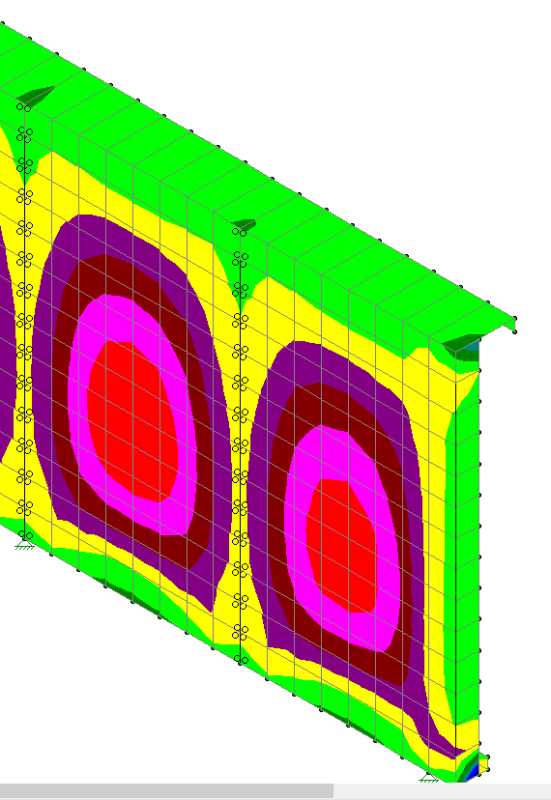why is (apparently) out-of-plane loading described as "tension" ?
This is a flat panel loaded with pressure. Any/Every linear FEM will tell you this panel will explode, 'cause what's happening is the flat web is deflecting (large displacement) and reacting the pressure as in-plane membrane stress.
Now that I write that, maybe you already know this and were really asking "how do I get a FEM to react pressure this way (as in-plane tension)?" The answer is large displacements, geometry non-linear, maybe hyper-plastic. The alternative is to hand calc it … assume a deformed shape (say spherical, as though the panel has dished) calculate the in-plane stress (hoop stress) that results, compare the strain this creates with the strain in your assumed shape and iterate. You might try Timoshenko, he may have something to say about thin plates. You could try Roark, he's usually got something to say about just about anything and everything.
another day in paradise, or is paradise one day closer ?

